When honeysuckle ripens in different regions
Edible honeysuckle is loved for its beneficial properties and early fruiting. The fruits contain vitamins C and P, iron, potassium, magnesium, phosphorus, pectins and sugars, therefore they help to restore the human body after a long winter. But after planting a bush, beginners cannot wait for the harvest for a long time and suspect that something is wrong with it or that the care was wrong. What factors determine the formation of ovaries, how to find out that honeysuckle is ripe, and when it leaves in different regions, we will tell in the article.
The content of the article
When honeysuckle ripens
The first ripening of fruits comes 2 years after planting, but sometimes this period falls on 3 or 4.
The active fruiting of the bush begins at the age of 6 years. Let's figure out when honeysuckle berries ripen in different regions.
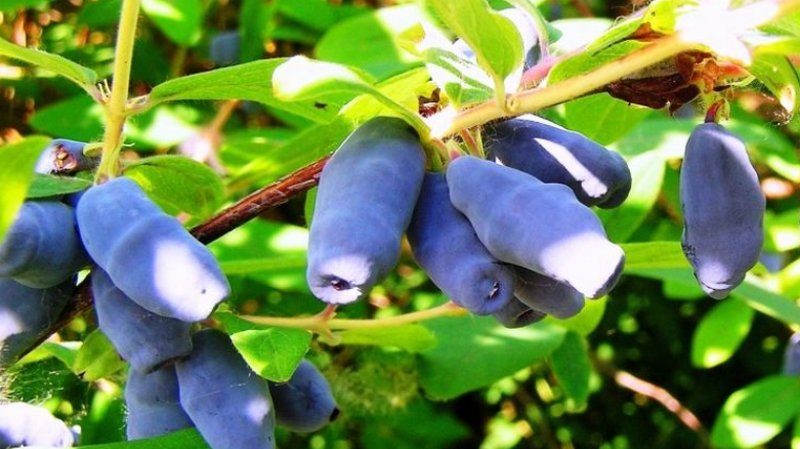
In the middle lane
The ripening period of honeysuckle depends on varieties... Usually the fruiting phase begins in June.
Such varieties are grown in the Moscow region:
- Altair... An early ripening variety with ripening dates from June 12-16. Long-term fruiting. Differs in resistance to frost, common diseases and pests. The main advantage is that overripe fruits remain on the bush until harvest.
- Bakchar giant... Large-fruited honeysuckle with medium ripening. Fruiting begins at the end of June, lasts 2-3 weeks.
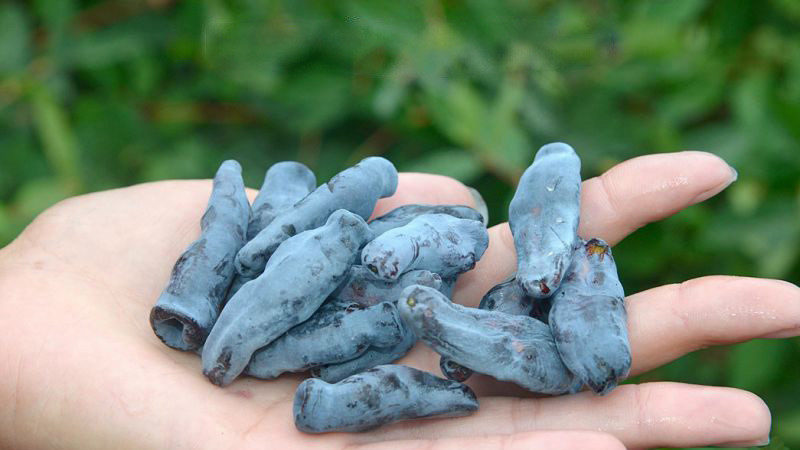 Bakchar giant
Bakchar giant - Blue spindle. It belongs to early maturing varieties with ripening dates from 12 to 23 June. It withstands frost and drought perfectly.
 Blue spindle
Blue spindle
If the honeysuckle does not begin to bear fruit within the specified time frame, then it does not have enough sunlight. Other reasons - damage to the root system by frost, insect attacks, disease.
When it sings in Siberia
Siberian honeysuckle is a winter-hardy crop with excellent health and long-term fruiting.
Ripening of berries in western Siberia begins in mid or late June; in late ripening varieties, this period falls at the beginning of July.
Reference. Varieties for Siberia thrive in cold, rainy weather. At the same time, unfavorable conditions do not affect in any way taste of fruits.
When the most popular varieties mature:
- Assol... This honeysuckle has very early maturity. Fruiting begins in early June.
- Slav. Medium early grade. The fruits ripen in mid-June.
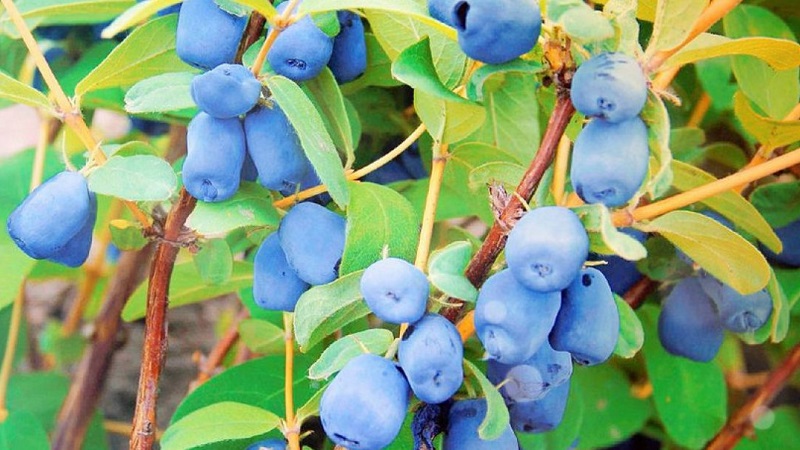 Slav
Slav - Anniversary. Well suited for cultivation in western Siberia. This is honeysuckle with a very late ripening of berries. The first crop is harvested in mid-July.
In Irkutsk
Gardeners select frost-resistant, large-fruited, fast-growing varieties. Honeysuckle begins to give ripe berries in mid or late June.
Attention! If honeysuckle is not harvested on time, birds and insects attack the berries. For processing, it is recommended to pluck unripe fruits so as not to lose the harvest.
Popular names for berries and their ripening times:
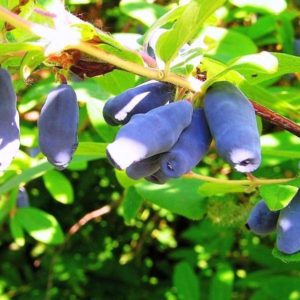
- Indigo Jam... Self-pollinated, bisexual variety. The first harvest is in mid-June.
- Titmouse... A bisexual variety with medium ripening times. Gardeners harvest ripe berries at the end of June.
- Bee Honey... Hardy honeysuckle with medium ripening. The berry season opens in mid-June.
In the Urals
For cultivation in the Urals, experienced gardeners choose late-ripening varieties of honeysuckle.
Before the start of fruiting, the shrub manages to gain strength and form more ovaries. The berry begins to bear fruit in early or mid-July.
When honeysuckle ripens in the Urals:
- Fire opal. This variety has a strong immunity to fungal and viral diseases, cold weather. The first berries are harvested in early July.
- The chosen one. Another winter-hardy, large-fruited honeysuckle. The first wave of the harvest falls on July 19-20.
- Commonwealth. A powerful shrub that gives off the first ripe berries on July 13-15.
In other regions
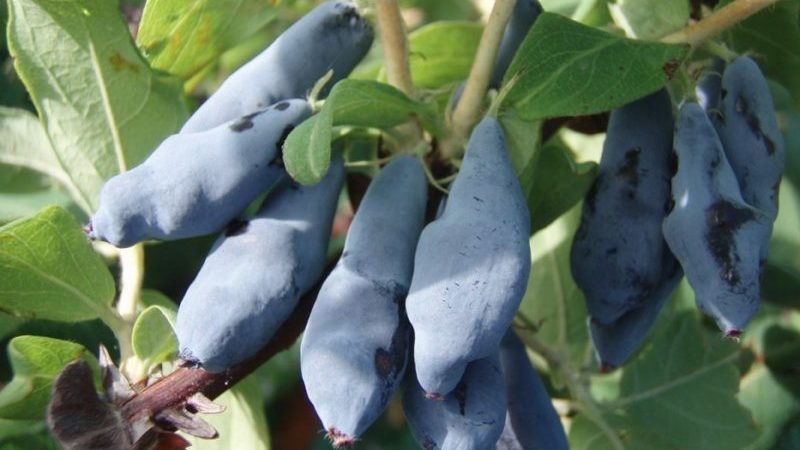
In other cities, the fruiting period of honeysuckle depends on two factors. First grade.
There are:
- early - ripe berries appear in early June;
- medium - in mid or late June;
- late - early or mid-July.
The second is leaving. Beginners make many mistakes, so there is a delay in the harvest or it is completely absent:
- Incorrectly selected area. Young seedlings require a lot of sunlight. In shaded areas, they give a meager harvest. A suitable level of soil acidity is pH 5.5-6.5.
- Lack of moisture. Freshly planted honeysuckle needs frequent and abundant watering.
- Pruning. The berry does not require early pruning as the procedure delays the first harvest.
The most suitable varieties for growing in the southern regions are Dlinnoplodnaya, Chernichka, Lastochka. For Altai - My joy, Chelyabinka, Altair.
Important! To ensure the most correct care for a particular variety, experienced gardeners recommend that you familiarize yourself with the technology of growing it in a nursery.
How to determine ripeness
The berries ripen in stages: first at the tops, in the depths of the bush, and then at the bottom.
The fruits acquire a bluish tint with a light waxy coating, and gradually crumble. During this time, gardeners recommend placing a dark, clean cloth under the bush. So the berries will not be lost.
Does the harvested honeysuckle mature
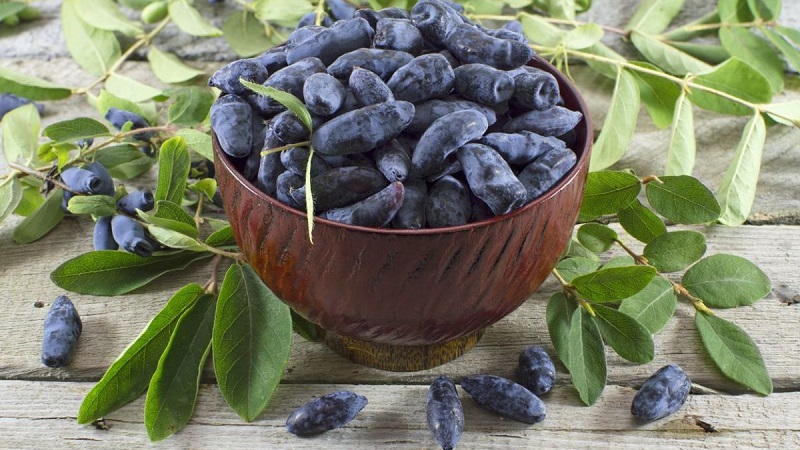
Honeysuckle fruits do not ripen. They quickly lose their presentation, deteriorate. The berries are processed: jam, jams, syrups are made.
If honeysuckle applies to sweet varieties, the fruits are well suited for fresh consumption.
Reference. In all existing berry crops, fruits ripen only on branches. But there is such a plant as actinidia. Its miracle berries are able to reach the stage of technical ripeness after separation from the vine.
Conclusion
The ripening time of edible honeysuckle depends on the variety and care. It is recommended to select zoned berries. They better adapt to the climatic conditions of the region, do not get sick, and give the harvest at the specified time.
Winter-hardy, mid-season varieties are suitable for the northern regions. For the south - early, for the Urals - late ripening, Moscow and the Moscow region - early and middle.